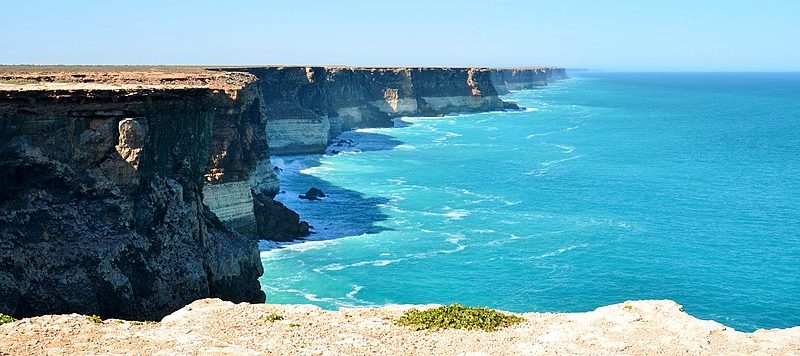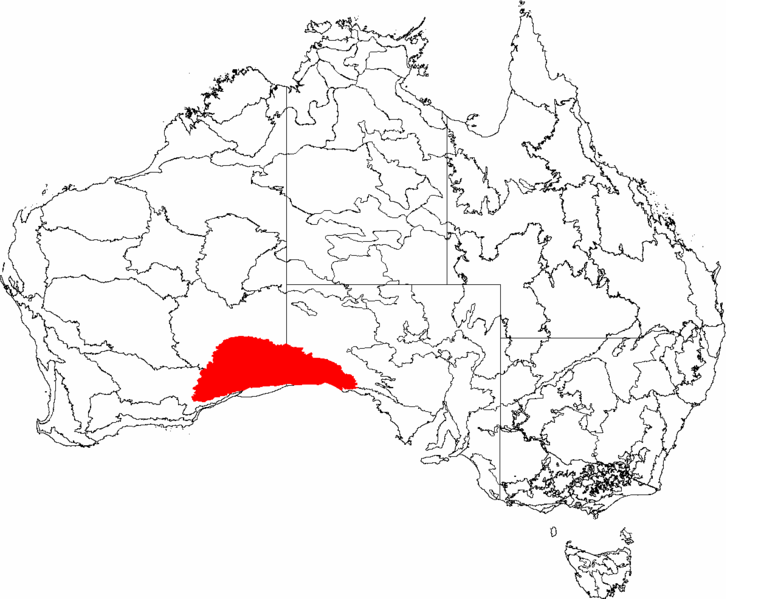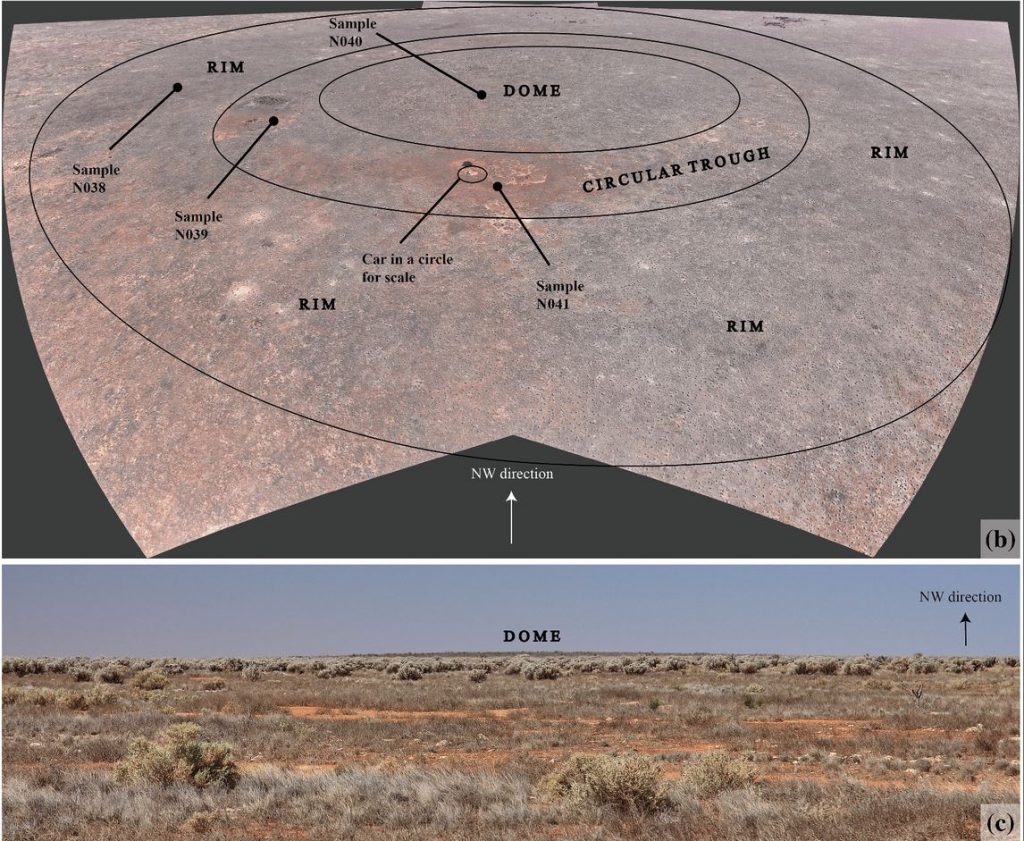The remnants of a long gone coral reef are not in the water here, but on top of the cliff. This is what real climate change looks like:*

The whole coral reef is now 100 m out of the water | Bahnfrend |
It turns out the high plateau desert called the Nullarbor was once a coral reef. It’s a thousand kilometer stretch without a tree that’s now about 100m above sea level. Obviously it’s a wilderness that’s begging to be restored to its true Miocene glory. The question is whether we can put on enough solar panels to save this reef, or if we can melt the Antarctic and raise the oceans…
Researchers looking at satellite images spotted a suspicious looking dome and ring (below) . They figured out it was not a meteor crater but probably made of coral atoll. It’s about one kilometer across and corals built this (probably) 14 million years ago. Tectonic shifts lifted the land out of the ocean. If only the polyps had put in a carbon tax?
The Nullarbor is a bit special because the surface is well preserved. There is not a lot of rain, no rivers to speak of, humidity is low, storm surges don’t wash over it and sediments don’t settle on it. Plus the nearest glaciers are in New Zealand.
““So even though it’s exposed, it’s kind of like a land that time forgot … the erosion is so slow, [these features] get preserved for millions and millions of years, kind of capturing a snapshot of how environments were at different times.” —WA Today
Once fish frolicked in the afternoon sun among the anenome here. Now there is saltbush.
This is the kind of climate change we need to teach children at schools. Geological, not Gretalogical.
Imagine the effect if students knew almost nothing was permanent, life was adaptable, and the climate changed all the time.
ScienceAlert:
Mysterious Reef From Millions of Years Ago Discovered in Vast Australian Desert
Most of Australia is now arid and dry, with vast inland deserts. Millions of years ago, though, during the Miocene, the continent was teeming with life; not just dense, thriving forest ecosystems, but huge inland seas.
The ocean that covered the Nullarbor started to dry up around 14 million years ago, exposing the shallow-water limestones deposited during the middle Cenozoic.
That means the Nullarbor is effectively a clean record of geological processes and features dating back to the Miocene.
“Evidence of the channels of long-vanished rivers, as well as sand dune systems imprinted directly into limestone, preserve an archive of ancient landscapes and even a record of the prevailing winds,” Barham says.
“And it is not only landscapes. Isolated cave shafts punctuating the Nullarbor Plain preserve mummified remains of Tasmanian tigers and complete skeletons of long-extinct wonders such as Thylacoleo, the marsupial lion.”
That’s not all. “At the surface,” adds Barham, “due to the relatively stable conditions, the Nullarbor Plain has preserved large quantities of meteorites, allowing us to peer back through time to the origins of our Solar System.”
*To be fair, mostly this is crustal plate deformation lifting the reef out of the ocean. h/t Alistair
REFERENCE
Lipar et al (2022) Enigmatic annular landform on a Miocene planar karst surface, Nullarbor Plain, Australia, Earth Surface Processes and Landforms. https://doi.org/10.1002/esp.5459


